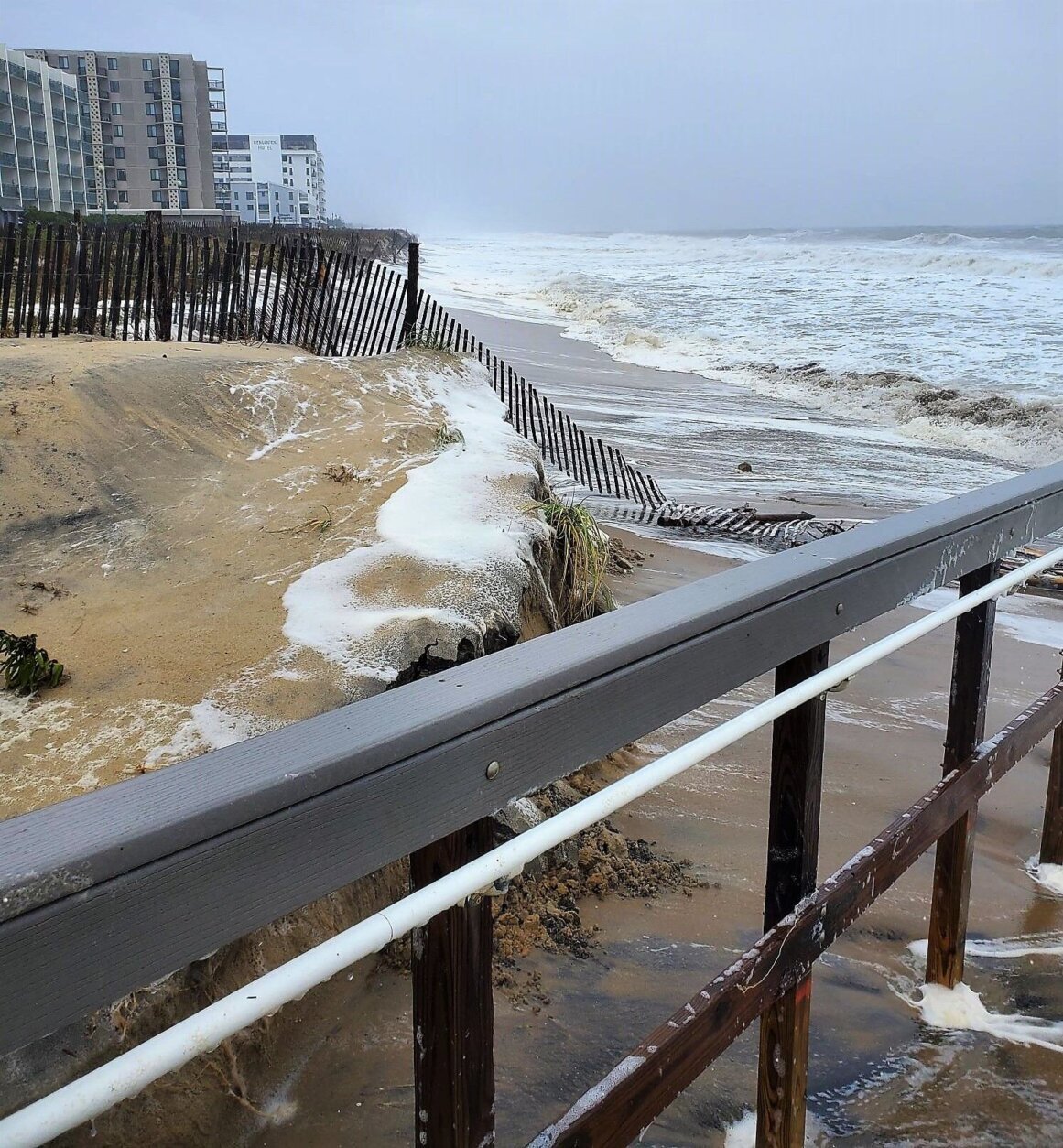
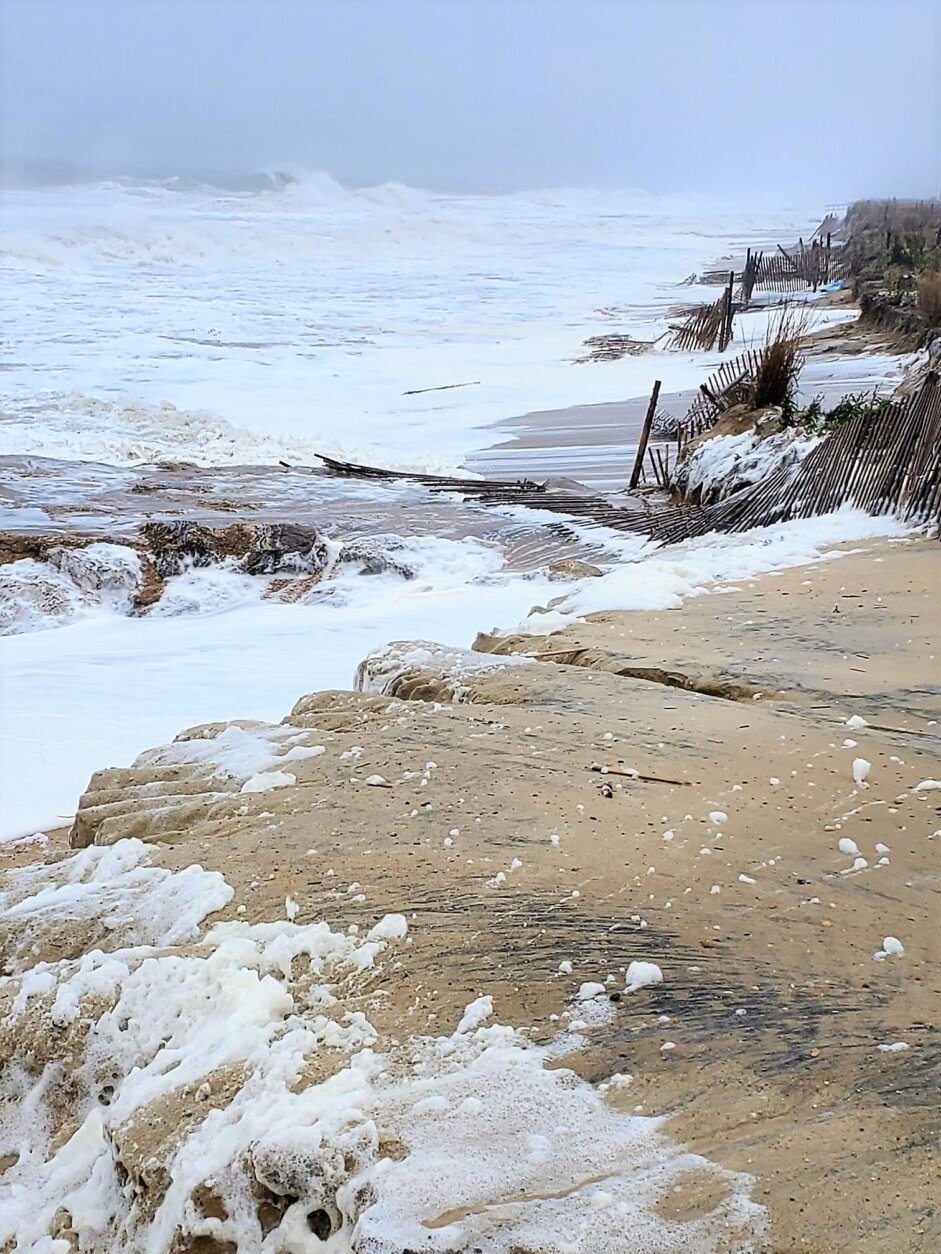
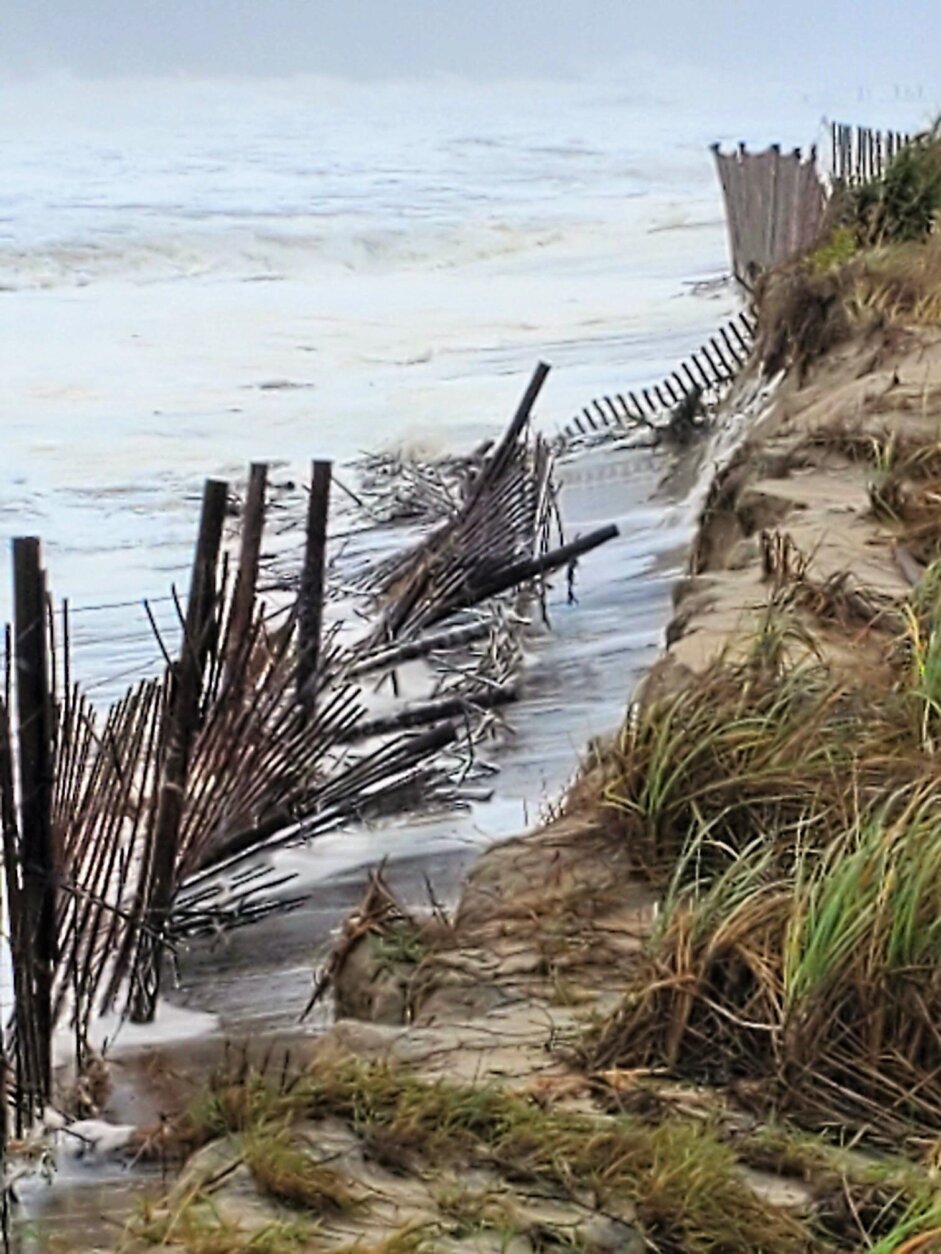
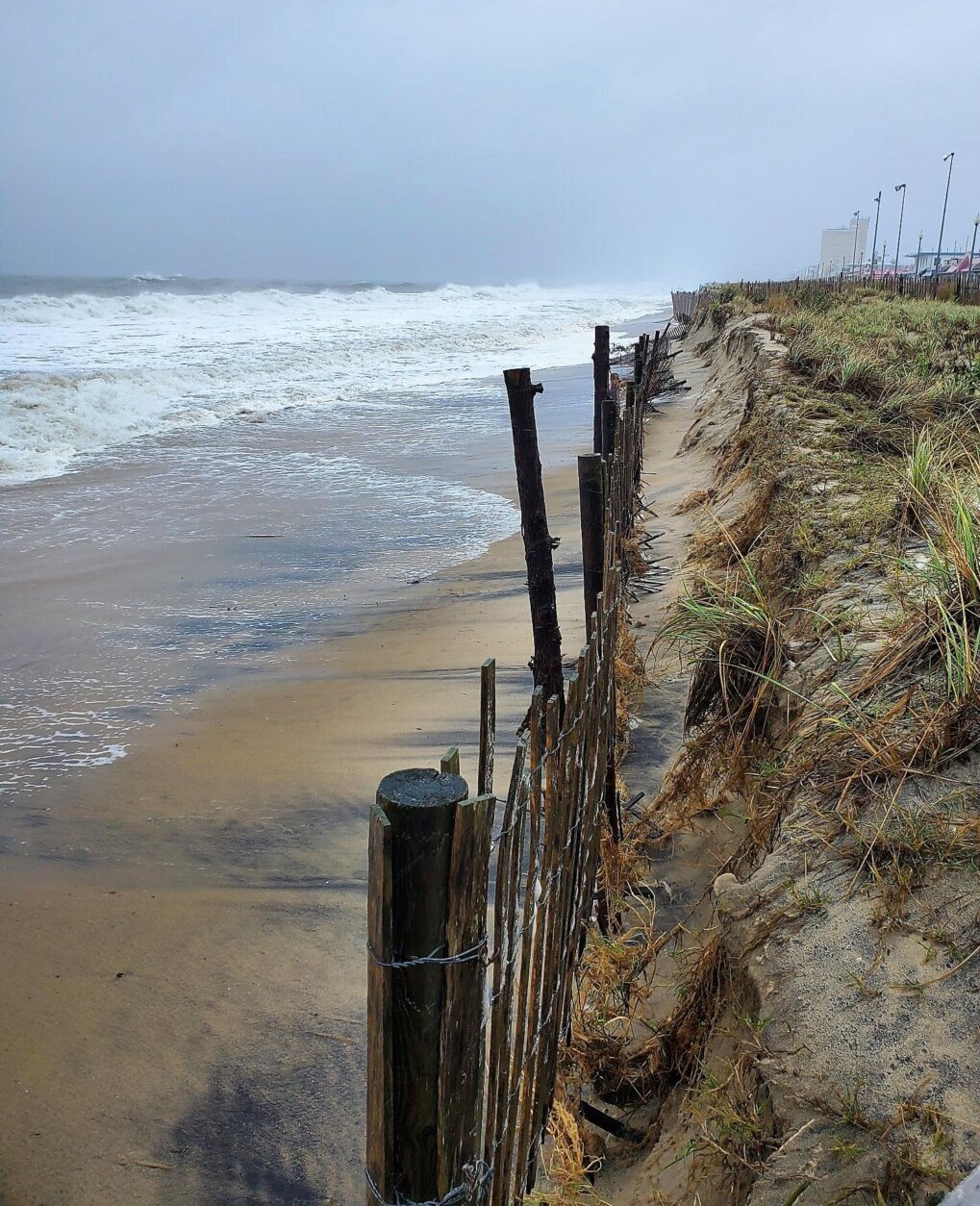
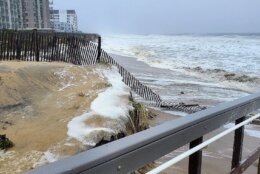
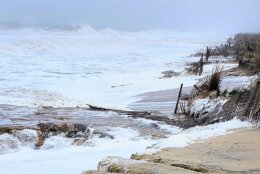
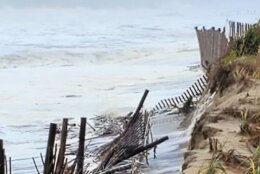
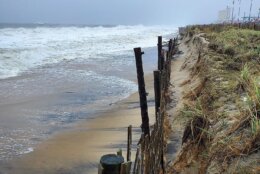
The damage from Hurricane Ian was obviously the worst by far in Florida, but the storm had an impact in the D.C. area, swallowing up and washing away lots of sand at some of the region’s favorite beaches.
In Delaware’s Rehoboth Beach, which saw a nor’easter erode much of the beach last May, the remnants of Ian washed even more of the beach away.
“We had extended high tides that were higher than normal, and with the high winds, it just battered our beach,” said Mayor Stan Mills. “We lost a lot of sand on the beach itself, and some of our dunes eroded.”
The worst of the damage was seen from around Rehoboth Avenue, up to the northern boundaries of the town. About half of the dune crossings are closed right now.
“If you were to walk on one of our dune crossings, there would be a point halfway through the 75-foot-wide dune where it’s carved away, and you would have a 6-foot jump to get to the beach.”
Unfortunately, this is just the beginning of the season when nor’easters become a big problem, and there’s worry in the back of Mills’ mind that another storm could wash away some dunes, bringing waves onto the town’s roads, into people’s homes and businesses.
But aside from some beach crossings, the town is fully open, with the restaurants and shops around Rehoboth gearing up for events such as Jazz Fest and the Sea Witch Festival.
Some of the sand that was washed away by the storm is also starting to get pushed back onto shore, so that helps, too. An even bigger help will be the beach replenishment project scheduled for this winter — and the timing couldn’t be better.
“It’s actually part of a 50-year federal program,” said Mills. “They come out every three years. They gauge the amount of sand that we have, or have lost, and they compare that to the template they first put in for the very first beach nourishment about a dozen or so years ago.”
If too much beach has eroded, assuming the federal funding is still there, then the government will sign a contract to pump sand back onto the beach again.
“We’re very fortunate to have that and it just so happens it was already scheduled for this coming winter,” said Mills. “We indeed will be ready to go again.”








